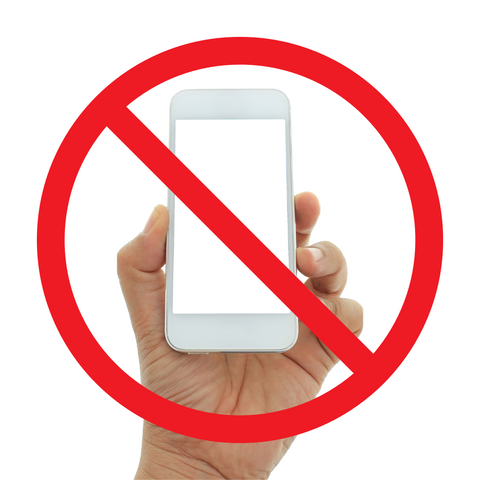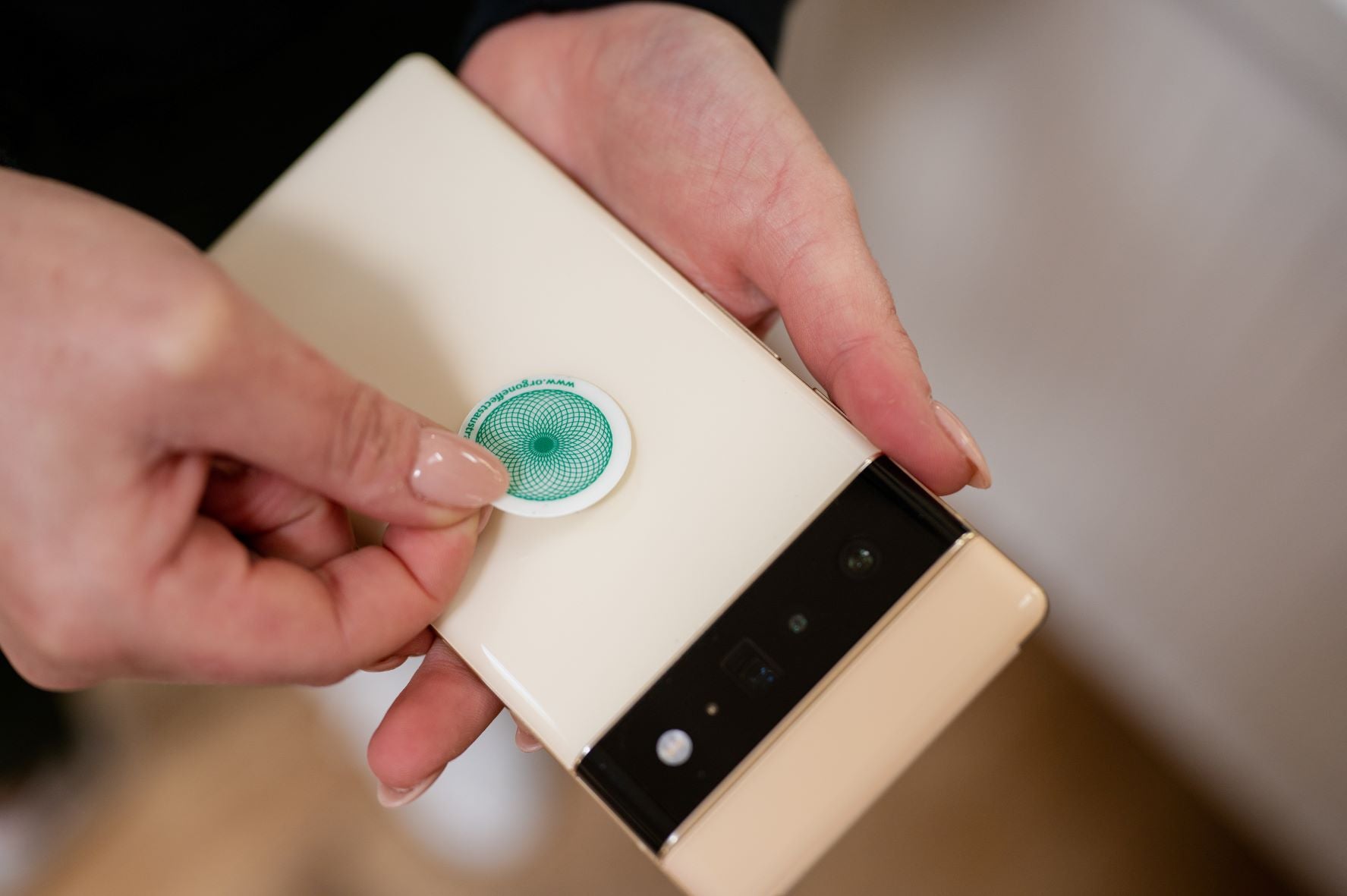With the widespread use of cellular phones, many worry about the potential impact of exposure to EMF. If the levels of radiation are safe, why has France placed a ban on iPhones?
In recent years, there has been growing concern about the potential adverse health effects of mobile phones and the radiation they emit.
France, in particular, has been at the forefront of addressing this issue, with its regulators taking an active role in monitoring and controlling the radiation levels emitted by mobile devices.
The French watchdog, Agence Nationale des Fréquences (ANFR), has been conducting extensive smartphone radiation tests and providing updates to users about the findings.
Recently, Jean-Noël Barrot, a junior minister within the French government, announced a sales ban on some models of iPhones due to their radiation levels exceeding the European radiation exposure limits.
This move has raised safety concerns among the public and highlighted the need for stricter regulations and further research into the potential health risks associated with the use of mobile phones.
In response, Apple has declared its commitment to addressing these concerns by updating its software to limit the absorption rate of radiofrequency energy by the human body.
The situation in France has brought attention to the importance of monitoring and regulating the electromagnetic radiation emitted by mobile phones.
European SAR Standards vs. USA SAR Standards

European SAR (Specific Absorption Rate) standards and US SAR standards represent two distinct regulatory approaches to the assessment of electromagnetic radiation exposure from mobile devices.
In Europe, SAR limits tend to be more stringent and precautionary, reflecting a conservative stance on radiation safety.
The European Union enforces SAR limits of 2 W/kg averaged over 10 grams of tissue, ensuring a lower permissible radiation exposure for consumers.
In contrast, the United States adopts a more lenient approach, allowing a SAR limit of 1.6 W/kg averaged over 1 gram of tissue.
This difference in SAR measurement methodologies and thresholds illustrates varying priorities in risk management, with Europe emphasizing more stringent health protection.
In Contrast, the US maintains a balance between innovation and safety, relying on the Federal Communications Commission (FCC) to enforce these standards.
Consequently, mobile devices sold in these regions often undergo different testing and compliance procedures to meet their respective SAR standards.
Protect What Matters Most With Orgone Energy
While the information around EMF exposure is troubling, there are options to protect yourself from its exposure.
At Orgone Energy, we have several products to protect from EMF from cellphones.

Our Phone Computer Bluetooth WiFi Radiation Protection is a great option for protection from EMF from cellphones and other small electronics.
Protect your family from the damaging effects of radiation with this powerful EMF Protection. Designed to offer superior protection from DNA damage and brain tumors, this shield will keep you and your loved ones safe and secure. Experience maximum radiation protection with this highly effective Phone Radiation EMF Protection.
If you are looking for cellphone protection that is backed by scientific studies, you can choose the Shungite Plate for Cellphone.
Experience reliable EMF protection with the Shungite Plate for Cell Phone. This natural sticker plate made of shungite guards against EMFs for your device, giving you peace of mind and superior protection.
We also offer a Shungite Phone Stand which is the perfect protection all night long. Its healing and protective powers come from the high 98% carbon composition of shungite - a natural stone with amazing properties.
French Radiation Standards

In France, the issue of mobile phone radiation and its potential adverse health effects has been a topic of concern for regulators. The French National Frequency Agency (ANFR) regularly conducts tests on mobile phones to measure their radiation levels.
Recent findings by the ANFR have revealed that several mobile phone models exceed the radiation limits set by French regulations.
These findings have raised questions about the safety of mobile phones and the need for stricter radiation standards.
To regulate the exposure to electromagnetic fields, France adopts the International Commission on Non-Ionizing Radiation Protection (ICNIRP) guidelines. ICNIRP sets the standards for Specific Absorption Rate (SAR), which refers to the amount of radiation emitted by a mobile phone that is absorbed by the human body.
Check out: Do you Know Your SAR Value? Cell Phone Radiation Level Chart
In addition to the ICNIRP guidelines, the European Union has also established SAR standards for mobile phones.
These limits ensure that the radiation emitted by mobile phones remains within safe levels and reduces the potential health risks associated with long-term exposure to radiofrequency electromagnetic fields.
To address safety concerns and protect public health, international health bodies, such as the World Health Organization, provide guidelines and recommendations on the safe use of mobile phones. These guidelines emphasize the importance of limiting exposure to electromagnetic radiation and using hands-free devices.
French radiation standards, based on ICNIRP guidelines and EU SAR standards, aim to regulate and minimize the potential health risks associated with mobile phone radiation.
The recent findings by the ANFR underscore the need for adherence to these standards and continual monitoring of mobile phone radiation levels.
Jean-Noel Barrot and The French Sales Ban

In recent developments, Jean-Noel Barrot, the Junior Minister for Digital Affairs in France, has announced a proposed ban on the sale of mobile phones that exceed the radiation limits set by French regulators.
This decision comes after the French National Frequency Agency (ANFR) conducted tests on various mobile phone models and discovered that many of them exceed the authorized radiation levels.
Barrot believes that this sales ban will help address the potential health risks associated with long-term exposure to radiofrequency electromagnetic fields. The proposed ban is part of France's efforts to ensure the safety of its citizens and align with international radiation standards.
This decision highlights the increasing awareness and concern regarding mobile phone radiation and its impact on human health, as well as the proactive measures taken by French regulators to protect the public.
A Brief History of Jean-Noel Barrot
By G.Garitan - Own work, CC BY-SA 4.0,
Jean-Noel Barrot plays a significant role in the controversy surrounding the French sales ban on iPhones due to radiation concerns. As France's minister in charge of digital issues, Barrot has been actively involved in assessing and addressing the potential health risks associated with mobile phones.
Barrot has expressed concerns about the iPhone's compliance with radiation standards set by French regulators.
He believes that the current software update provided by Apple, which limits the maximum exposure to radiofrequency energy, is insufficient to meet the stringent French radiation limits.
Barrot has emphasized the need for the iPhone to meet the absorption rate of 2 watts per kilogram of body weight, as specified by European Union standards.
The French regulators have been closely monitoring the radiation levels emitted by mobile phones, aiming to ensure the safety of the human body against electromagnetic fields.
His statements have sparked debate over the potential adverse health effects of mobile phone radiation and the effectiveness of current radiation watchdogs.
Barrot has been actively pushing for more stringent regulations and independent laboratory tests to determine the true radiation levels emitted by devices like the iPhone.
Jean-Noel Barrot, as France's minister in charge of digital issues, has been instrumental in the French sales ban on iPhones due to radiation concerns. He has called for stricter compliance with radiation standards and independent third-party lab results to address safety concerns.
The French Sales Ban on iPhones

The French Sales Ban on iPhones was recently imposed by France's radiation watchdog, Agence Nationale des Frequences (ANFR).
This ban came about due to concerns over the levels of electromagnetic energy absorption emitted by the iPhone 12, which exceeded the European Union's standards.
The specific concern with the iPhone 12 is its Specific Absorption Rate (SAR) - a measure of how much electromagnetic radiation is absorbed by the human body. The SAR levels of the iPhone 12 were found to be higher than the legally allowed limits, prompting the ANFR to take action.
To address this issue, a software update has been suggested as a potential solution. It is believed that this update could limit the electromagnetic energy absorption of the iPhone 12 to comply with the European Union standards. By implementing this update, it is hoped that the ban on iPhone sales in France can be lifted.
The French Sales Ban on iPhones serves as a reminder of the importance of adhering to radiation standards and the need for mobile phone manufacturers to ensure the safety of their devices.
This ban also highlights the vigilance of regulatory bodies, such as the ANFR, in monitoring and enforcing these standards to protect consumers from potential health risks associated with electromagnetic energy absorption.
International Bodies Weigh In on the Issue

The concern over the high levels of electromagnetic radiation emitted by the iPhone 12 has garnered attention from international bodies.
Various organizations and regulatory bodies, such as the European Union and its member states, have been closely monitoring the situation.
The potential adverse health effects of prolonged exposure to electromagnetic fields have prompted these international bodies to take action in order to protect consumers.
The intensity of electromagnetic radiation emitted by mobile phones, including the iPhone 12, has been a topic of concern for years, and now it seems that even stricter regulations and standards may be necessary to ensure the safety of users.
These international bodies are working towards finding a solution that balances technological advancements with the well-being of individuals. By collectively addressing the issue, they aim to set clear radiation standards for mobile phones and protect users from potential health risks.
European Union Involvement

The involvement of the European Union (EU) in the iPhone ban in France is significant, as the EU is responsible for setting radiation standards and guidelines across member countries.
With increasing concerns about adverse health effects from mobile phone radiation, the EU has been actively monitoring and regulating the levels of electromagnetic radiation emitted by mobile phones.
In response to the ban, the EU has supported the actions taken by French regulators to protect consumers.
The EU has urged all member countries to adhere to the agreed-upon radiation standards and guidelines to ensure the safety of mobile phone users.
The European Commission, the governing body of the EU, has emphasized the importance of software updates for mobile phones to comply with radiation limits. They have encouraged phone manufacturers to release updates that limit radiation levels and protect consumers' health.
The EU's involvement in the iPhone ban demonstrates its commitment to ensuring the safety of mobile phone users by setting radiation standards and guidelines. It also highlights the collaborative approach between EU member countries to address potential health risks associated with mobile phone radiation.
Non-Ionizing Radiation Protection Group (NIRP) Response

The Non-Ionizing Radiation Protection Group (NIRP) has closely examined the issue of smartphone radiation in France and has responded with a focused approach.
NIRP acknowledges the potential health risks associated with non-ionizing radiation emitted by mobile phones and other electronic devices.
They emphasize the need to address these risks to ensure the well-being of mobile phone users.
NIRP has recommended a series of measures to mitigate the potential health risks associated with smartphone radiation.
NIRP Recommendations Include:
- Increasing public awareness about the risks,
- Encouraging manufacturers to limit radiation levels in their devices through software updates
- Conducting further research to better understand the long-term effects of non-ionizing radiation exposure.
NIRP also urges users to be mindful of the duration of exposure to their devices and to take breaks to minimize the potential harm.
In addition to their recommendations, NIRP has undertaken various initiatives and research projects to gain a better understanding of smartphone radiation and its impact on human health.
They have collaborated with independent third-party labs to conduct laboratory tests and analyses. These initiatives aim to provide accurate data and findings to regulators and contribute to evidence-based decision-making.
As a leading authority in the field, NIRP plays a crucial role in setting guidelines and standards for radiation exposure.
They work closely with international bodies, such as the European Union, to establish and promote regulatory frameworks that ensure the safety of mobile phone users.
By setting these guidelines, NIRP aims to protect the public from potential health risks associated with non-ionizing radiation.
NIRP recognizes the potential health risks associated with smartphone radiation and has responded by recommending measures to address these risks. Through initiatives and research, NIRP aims to gather valuable data and contribute to evidence-based decision-making.
As they continue to work closely with international bodies, NIRP plays a pivotal role in setting guidelines and standards for radiation exposure to ensure the well-being of mobile phone users.
Types and Sources of Radiation

Radiation is the emission of energy in the form of electromagnetic waves or particles. There are two main types of radiation: ionizing and non-ionizing.
Ionizing radiation, such as X-rays and gamma rays, has enough energy to remove tightly bound electrons from atoms, which can cause damage to cells and DNA.
Non-ionizing radiation, on the other hand, does not have enough energy to remove electrons, but it can still interact with the human body and have potential health effects.
Non-ionizing radiation is mainly produced by electronic devices, including mobile phones, Wi-Fi routers, and microwave ovens.
These devices emit electromagnetic fields, which consist of radiofrequency waves. Radiofrequency waves are a type of non-ionizing radiation and are a common source of exposure for most people. Mobile phones, in particular, emit electromagnetic waves while transmitting signals to and receiving them from cell towers.
It is important to note that the potential health risks associated with non-ionizing radiation are a subject of ongoing scientific research and debate.
Regulatory bodies, such as the National Institute for Radiation Protection and Nuclear Safety, monitor and set limits for radiation exposure to ensure public safety.
By understanding the types and sources of radiation, we can better assess and manage potential risks associated with everyday electronic devices.
Electromagnetic Fields (EMF)

Electromagnetic Fields (EMF) are a fundamental concept in understanding the potential health effects of non-ionizing radiation.
EMF refers to the area surrounding any object that carries an electric current, such as electronic devices and power lines.
These fields consist of electric and magnetic components that interact with each other and propagate through space.
In the context of radiation standards and human health, EMF plays a crucial role.
Various international bodies, including the European Union and national regulators like the French Agency for Food, Environmental, and Occupational Health & Safety, set guidelines and regulations to limit exposure to EMF.
These guidelines aim to protect individuals from potential adverse health effects associated with prolonged or excessive EMF exposure.
The main sources of EMF include mobile phones, Wi-Fi routers, power lines, and other electronic devices.
Of particular relevance to the discussion is the role of mobile phones, which emit EMF while transmitting signals to and receiving them from cell towers. This poses a potential health risk, as the human body can absorb EMF and convert it into heat, potentially leading to adverse health effects.
In the case of the French sales ban on iPhones, EMF exposure was likely a significant factor considered by French regulators.
By prohibiting the sale of certain iPhone models, French regulators aimed to address concerns related to potential health risks associated with EMF exposure.
Overall, understanding the concept of EMF is crucial in comprehending radiation standards and their implications for human health. By recognizing the main sources of EMF, including mobile phones, and comprehending their potential impact, regulators can make informed decisions to safeguard public health.
Radiofrequency Waves (RF)

Radiofrequency Waves (RF) are a type of electromagnetic radiation emitted by mobile devices, including phones. These waves are measured in terms of SAR (Specific Absorption Rate), which refers to the rate at which body tissue absorbs RF energy.
SAR levels indicate how much RF energy is absorbed by the human body when using a particular mobile device.
Check out: How to Measure SAR
In legal settings, manufacturers are required to provide SAR levels for their phones. This information allows users to make informed decisions about the potential exposure to RF radiation.
To access SAR ratings for a specific device, users can visit the manufacturer's website or search for terms such as RF Exposure or SAR Rating in the device's settings.
It is important for individuals to be aware of SAR levels as prolonged exposure to RF radiation may have potential health implications.
By understanding the SAR levels of their mobile devices, individuals can actively manage their exposure to RF radiation and make choices that align with their personal comfort levels regarding electromagnetic radiation.
Kilogram of Body Weight Rule in Absorption Rate

One important factor in assessing the potential health risks of cellphone radiation is the kilogram of body weight rule in absorption rate.
This rule states that the absorption rate of radiofrequency (RF) energy in the human body is measured in watts per kilogram (W/kg).
The significance of this rule lies in understanding how much RF energy is absorbed by the body tissues when exposed to cellphone radiation. Different parts of the body have varying absorption rates, and the kilogram of body weight rule helps in estimating the potential health risks based on the specific absorption rates.
In the context of the French sales ban on iPhones, the kilogram of body weight rule becomes crucial. French regulators, led by Junior Minister Jean-Noel Barrot, have expressed concerns about cellphone radiation and its possible adverse health effects.
By considering this rule, regulators can assess the absorption rate of RF energy in the human body and determine whether it exceeds the acceptable levels set by radiation standards.
The kilogram of body weight rule in absorption rate helps in understanding the potential health risks of cellphone radiation by measuring the rate at which the human body absorbs RF energy. It is important to consider this rule in the context of the French sales ban on iPhones to ensure the protection of consumers from excessive exposure to radiation.
Conclusion & Future Implications
In conclusion, the French sales ban on iPhones due to concerns over cellphone radiation and its potential adverse health effects has significant implications for the future. By considering the absorption rate of RF energy in the human body, regulators can assess the potential risks and determine whether they exceed the acceptable levels established by radiation standards.
The impact of the ban on iPhone sales in France is substantial, as it restricts the availability and usage of these devices in the country.
However, it also raises questions about the safety of mobile phones in general and may prompt other countries to reassess their regulations and policies regarding cellphone radiation.
The French National Frequency Agency (ANFR), which conducted independent laboratory tests on iPhone models, intends to share its findings with regulators in other European Union member states. This exchange of information could potentially lead to similar bans or stricter regulations being implemented in other countries.
It is worth noting that there is still uncertainty surrounding the investigations conducted by other authorities. For example, Germany's Federal Office for Radiation Protection has initiated discussions on the need for change but has not made any definitive decisions yet.
Overall, the French sales ban on iPhones serves as a significant step towards addressing the potential health risks associated with cellphone radiation. The ANFR's findings, along with the intention to share them with other regulators, have the potential to shape future bans and regulations not only in France but also in other EU member states.









